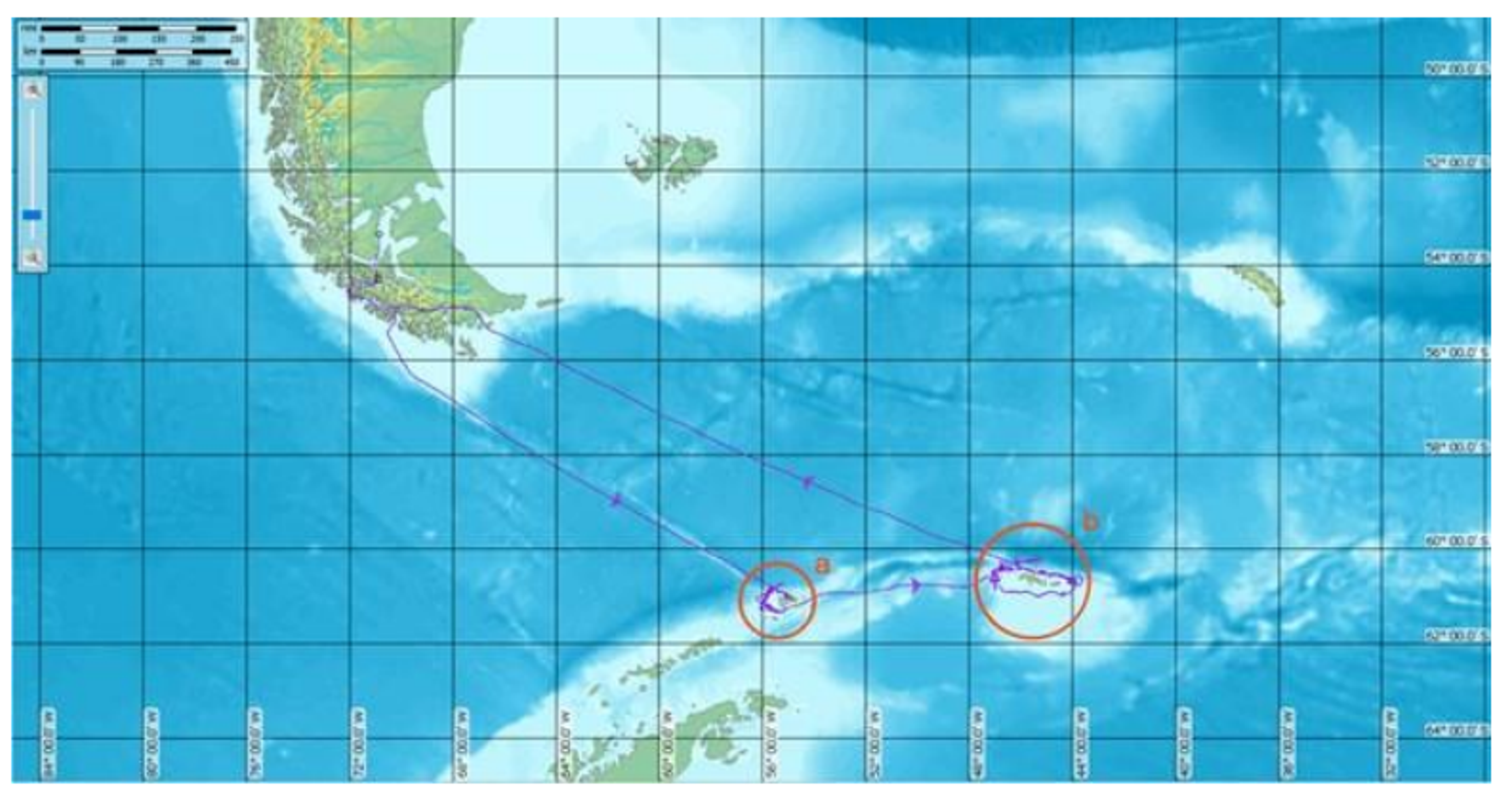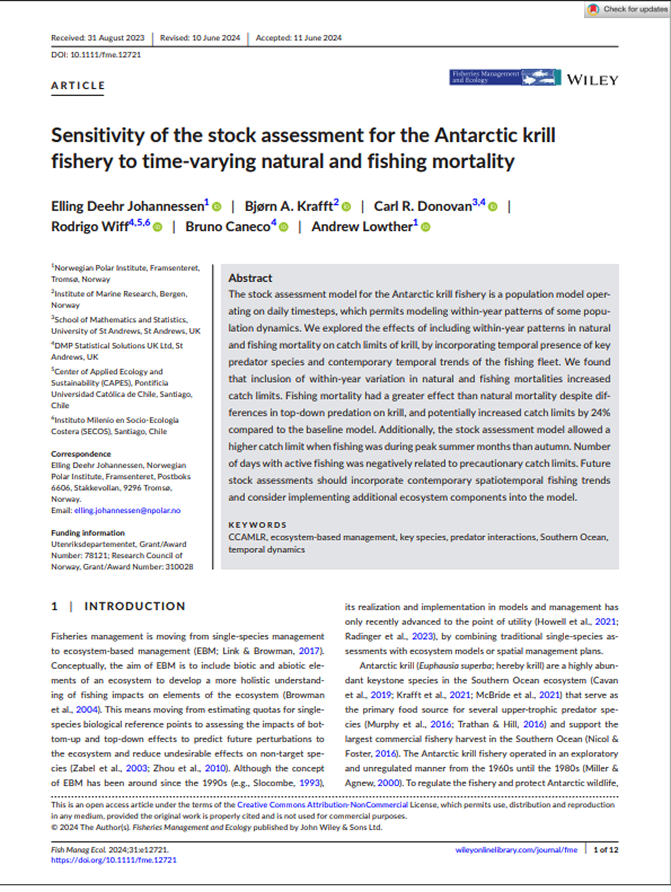Biomass
Fisheries management
Antarctic ecosystem
Antarctic demersal finfish around the Elephant and the South Orkney islands: distribution, abundance and biological characteristics
Summary
A comprehensive 2018 bottom trawl survey around Elephant Island and the South Orkney Islands catalogued the region's demersal finfish populations, identifying 37 different species with a total catch of 19.1 tonnes. The survey revealed distinct regional patterns in fish communities: around Elephant Island, Antarctic silverfish (Notothenia rossii) dominated the catches, making up 85% of all fish captured, while around the South Orkney Islands, the humped rockcod (Gobionotothen gibberifrons) was the most abundant species.This research provided crucial updated stock assessments for waters that have been under a fishing moratorium since the 1989/90 season, nearly three decades of protection. The survey documented significant regional differences in both species composition and fish abundance between the two island groups.Among the key discoveries was the identification of a nursery area for Antarctic dragonfish (Champsocephalus gunnari), where young fish concentrate to grow and develop. The survey also continued important long-term monitoring efforts to track fish population recovery in areas that were historically overfished and depleted before the fishing ban was implemented.

1
This map shows the navigation route and sampling locations for the 2018 research cruise. Panel (a) displays 15 bottom trawl stations around Elephant Island (Subarea 48.1), while panel (b) shows 21 sampling sites around the South Orkney Islands (Subarea 48.2). The systematic sampling pattern enabled comprehensive assessment of demersal finfish populations in these Antarctic waters under fishing moratorium since 1989/90.Key Findings
1
Researchers collected 37 different fish species during 36 bottom trawl sampling operations, with 15 hauls conducted around Elephant Island and 21 around the South Orkney Islands. 2
Antarctic silverfish (N. rossii) overwhelmingly dominated catches at Elephant Island, accounting for 16.2 tonnes or 85% of all fish caught, but was virtually absent from South Orkney Islands waters. 3
The two regions showed distinctly different fish communities, with humped rockcod (G. gibberifrons) being the most common species around the South Orkney Islands. 4
Scientists discovered an important nursery area for young Antarctic dragonfish (C. gunnari) measuring 5-13 cm in total length on the western shelf waters of Elephant Island. 5
Population estimates revealed substantial fish stocks: approximately 376,229 tonnes of Antarctic silverfish around Elephant Island and 11,145 tonnes of humped rockcod around the South Orkney Islands. 6
Most captured fish showed developing or fully developed reproductive organs, indicating the survey timing coincided with important spawning periods in these species' life cycles.

